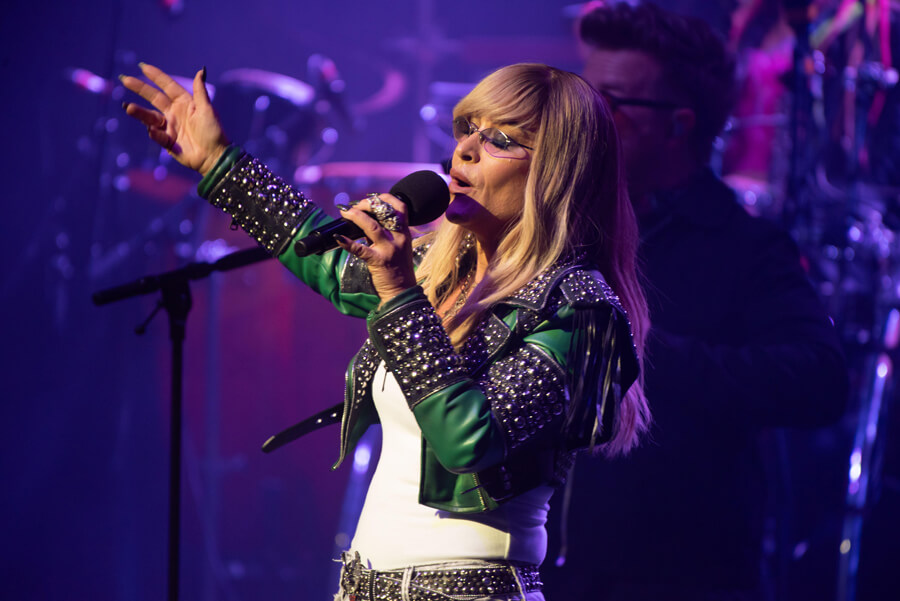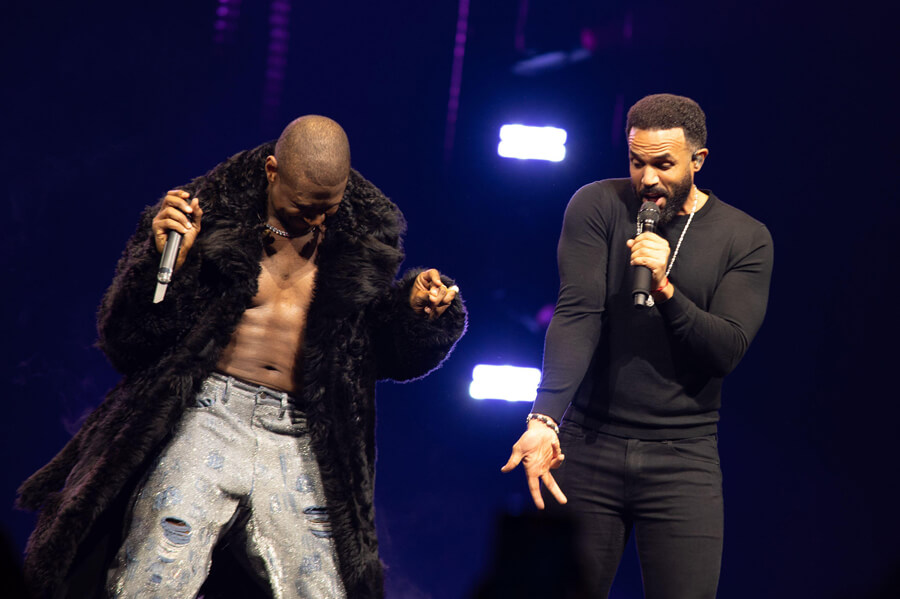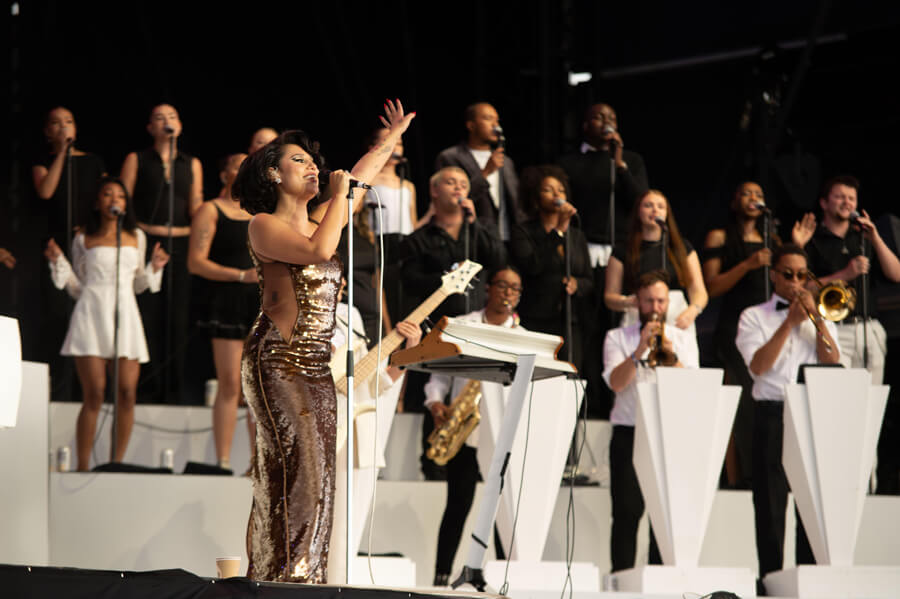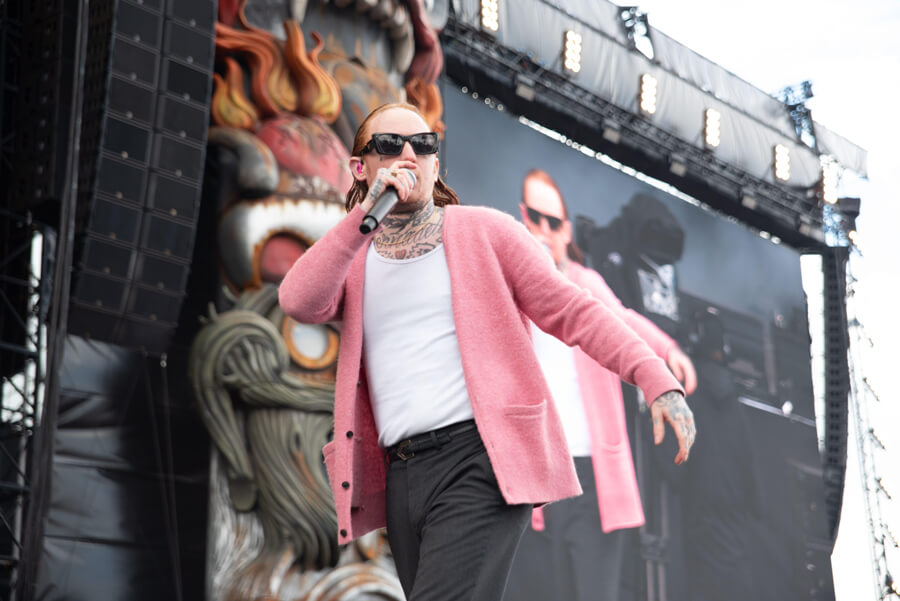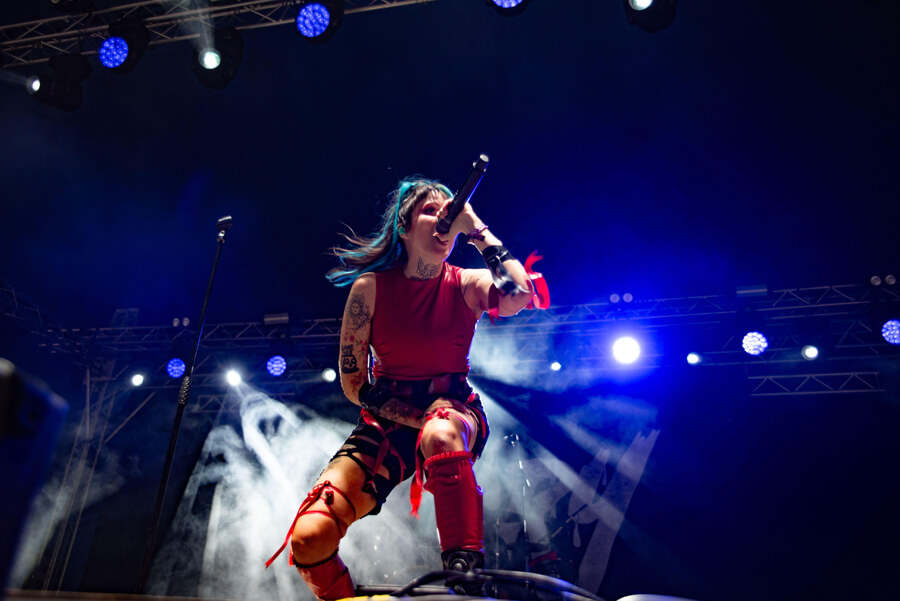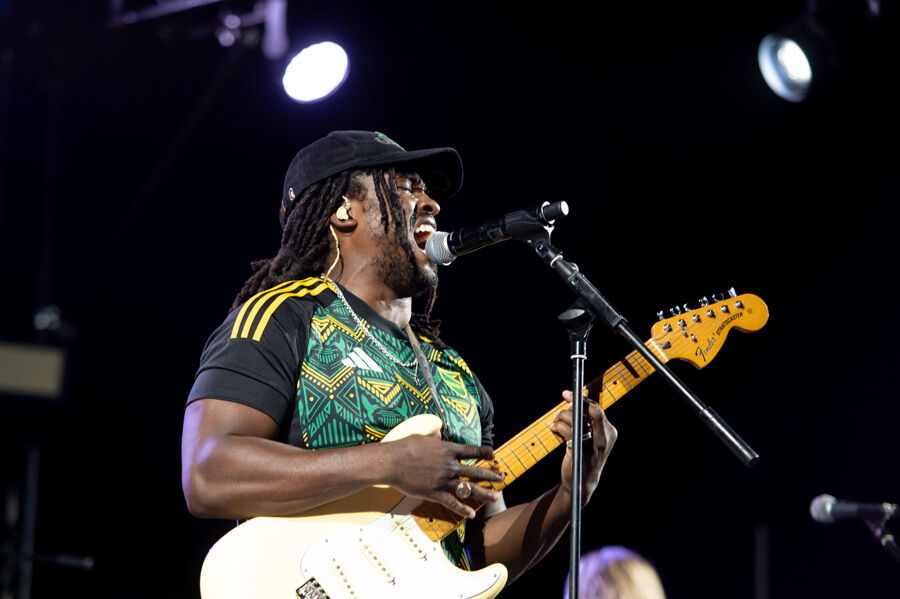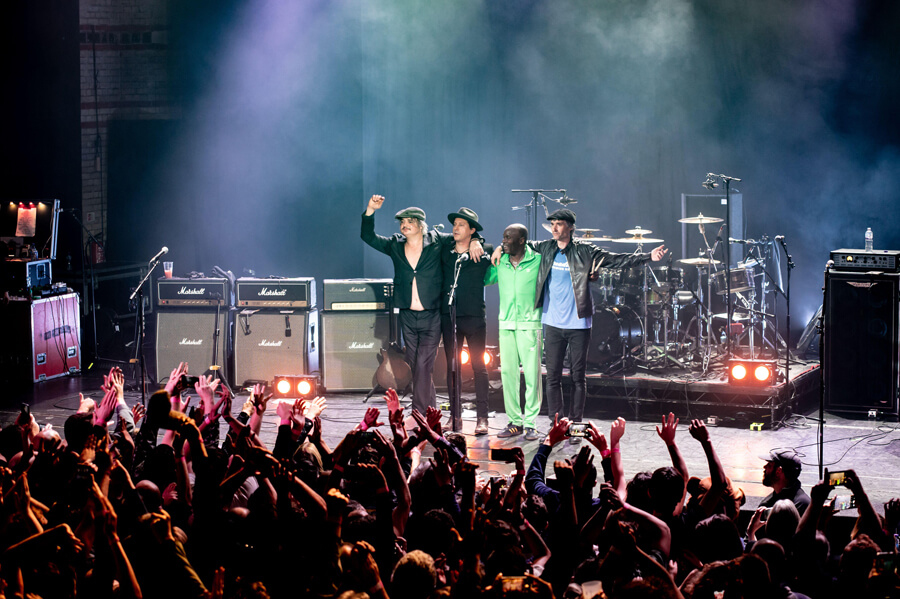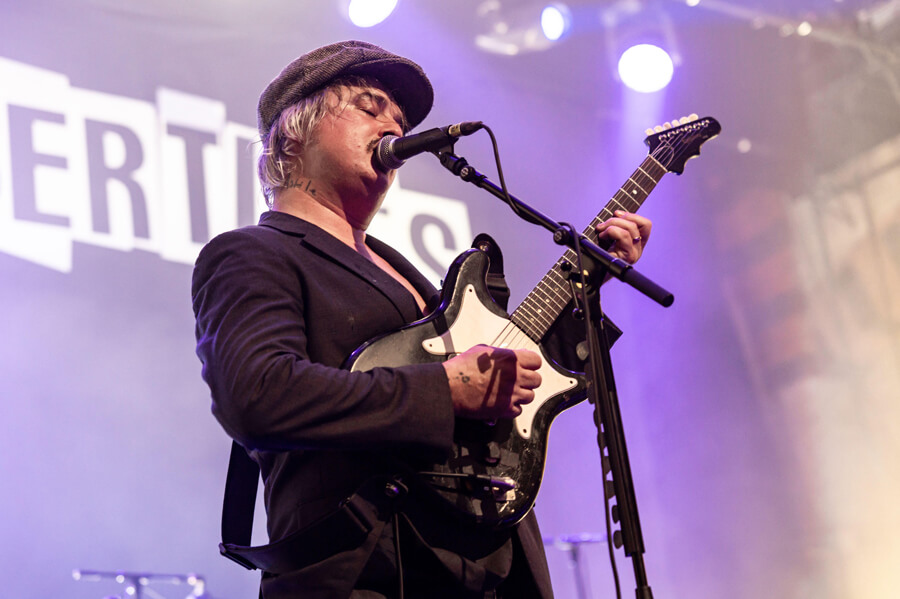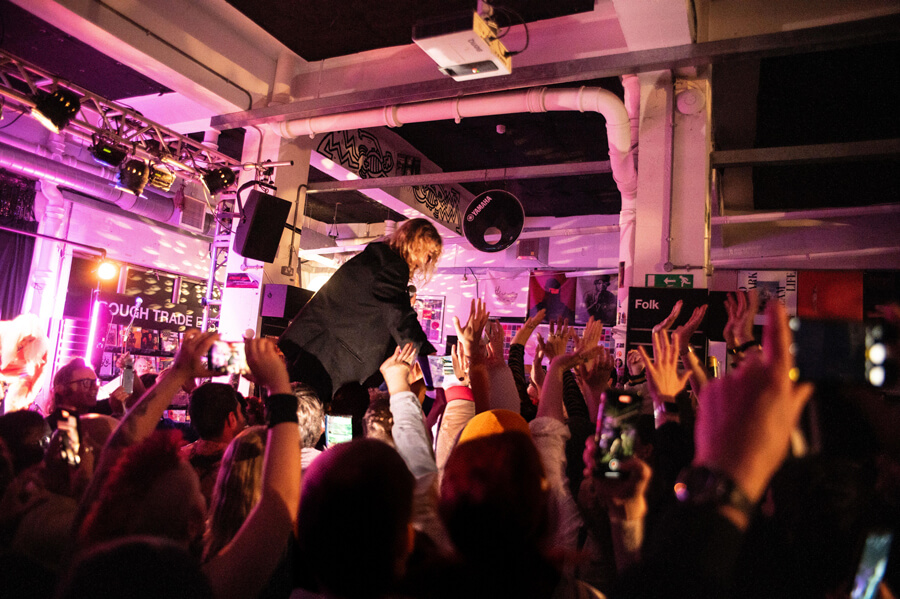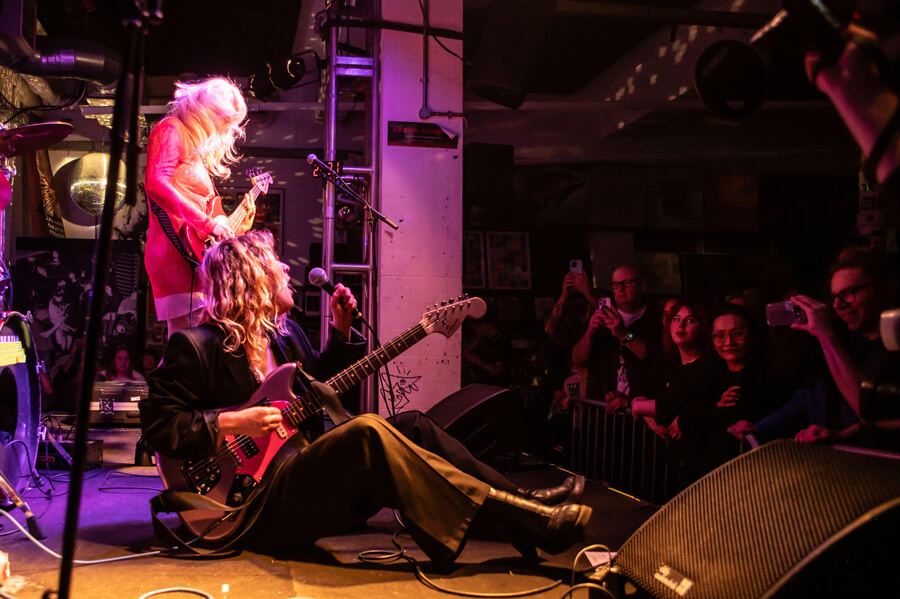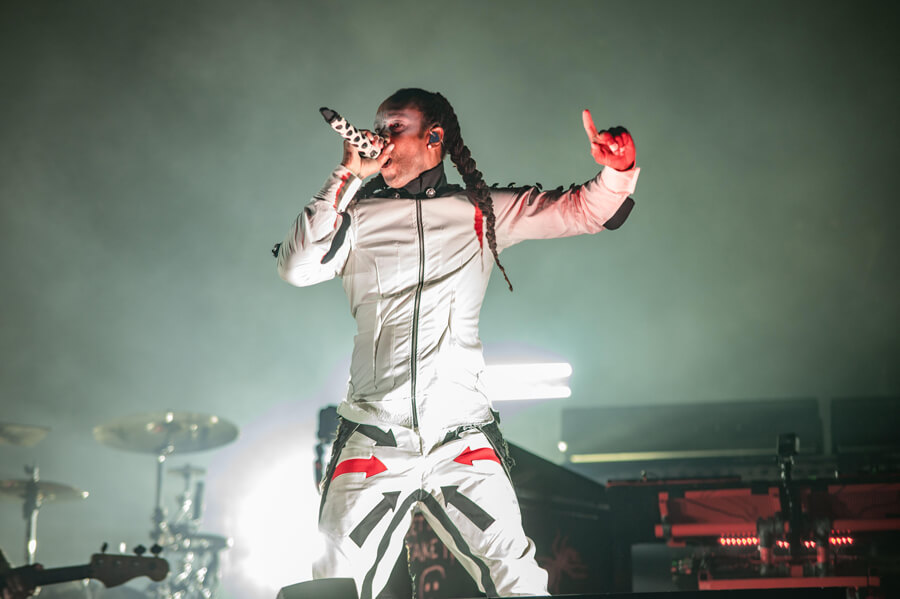With the UK’s music festival season already being well underway, it only seemed fitting for music photographer Cristina Massei to be up next in our News, Sports, and Entertainment spotlight. Cristina has photographed iconic bands and musicians such as The Libertines, Metallica, and Gwen Stefani, with her images appearing in well-known publications; Rolling Stones, The Guardian and NME.
It’s clear Cristina has years of experience photographing in the music industry and she doesn’t shy away from voicing her opinion regarding the decline of local venues, and the necessity to protect photographer’s rights when it comes to restrictive contracts.
Delve deeper with us as we find out why moving to London helped Cristina’s career, what festivals she is looking forward to capturing most this year and the challenges she and other photographers face within the ever-changing landscape in the music industry.
CG: You specialise in music photography, can you tell us how you got into the industry and how long you’ve been photographing for?
CM: I’ve been passionate about live music for as long as I can remember. My journey into photography began at age 10 when my uncle gifted me a film point-and-shoot camera. Growing up in Rome not many international tours would stop by, so when I was 14, I started photographing artists outside TV studios when doing promos, and selling prints through our local music memorabilia shop, to reinvest in more film and prints. My first proper gig as a fan was Spandau Ballet in Rome. Being under 5 feet tall, I quickly realised that becoming a music photographer or being a security guard were the only ways to see anything up close and ‘feel’ the performance the way I wanted to. Nature made the ‘security guard’ option rather difficult, so here we are…
At 26, I moved to London to immerse myself in its vibrant music scene. I began contributing to an Italian hair metal blog – Motley Crue, Poison, Faster Pussycat and the likes, which was my thing back then. That helped me build the first industry contacts — some of whom are now clients and friends. In 2009, I co-founded Sonic Shocks a music website and magazine, cementing and widening my industry phonebook, knowledge and expertise. After Covid, my old job as a photography tutor and guide dried up, so I joined Alamy initially for stock photography until I applied for covering live news and was accepted.
London, England. 6th May 2025. 90s pop icon Anastacia returns to London to perform at the Palladium
CG: You’re based in London, does this help with capturing content within your expertise?
CM: Absolutely — London offers unparalleled access to a diverse and vibrant music scene, providing countless opportunities for music photographers. However, the city’s landscape has changed over the years. Iconic venues like the Astoria, which hosted legendary acts such as Madonna, Nirvana, Radiohead, and Oasis, have been lost to developments like the Crossrail project. In their place, larger, more corporate venues like the O2 Arena have become prominent. While these venues accommodate massive audiences, they often lack intimacy, personality and atmosphere compared to for example Glasgow Barra, Manchester Albert Hall or Edinburgh’s Usher Hall.
The closure of many grassroots venues across London has made it increasingly challenging to capture emerging talent in authentic intimate settings. Cities like Birmingham or Liverpool and smaller towns still boast thriving underground scenes, offering rich opportunities for photographers seeking to document the raw energy of live performances. Venturing beyond London allows for a broader exploration of the UK’s dynamic music landscape.
London, England. 5th April 2025. Usher brings on stage another R&B legend, Craig David, on Saturday night at the O2
CG: With the UK festival season now in full swing, will you be attending any and which musicians/bands are you looking forward to capturing?
CM: Festival season is both exhausting and exhilarating. I can’t wait for Friday, by Saturday I can’t wait for Sunday, but when Sunday afternoon comes, I start getting bad cases of withdrawal syndrome. This year, I’m thrilled to cover my first Glastonbury, as well as Download — always a great atmosphere in the press tent. Other plans include Reading, Wireless, Gunnersbury, and Rewind for a nostalgic trip.
Saturday at Glastonbury is particularly exciting: Raye, who captivated me at Reading last year with her Amy Winehouse-esque vibe is performing, and I’m eager to finally shoot Charli XCX. Glastonbury always holds surprises, so I’m staying alert for unexpected guests.
At Download, Sunday’s smaller stages feature acts like Steel Panther, Alien Ant Farm, Me First, and The Gimme Gimmes — perfect for some end-of-festival fun.
Closer to home, I’m looking forward to capturing Chappell Roan and Lola Young at Reading. The Libertines are headlining Gunnersbury Park on August 9th, and since it’s local to me, I’m hoping to organise a small exhibition of my work with them.
CG: Who has been your favourite musician to capture and why?
CM: Peter Doherty, without a doubt. I first photographed The Libertines at BST Hyde Park when I unexpectedly got a pass. The band’s publicist loved my shots, leading to more opportunities. Eventually, Peter himself reached out expressing his appreciation for my work in a beautiful email, and I began capturing him both on and off stage. His performances are deeply emotional, and it’s rewarding when fans say my photos make them feel present at the gig. I aim to capture emotions on stage, and even when the subject is not my usual taste I always try to get into the atmosphere and watch it from a fan’s eye.
CG: Are there any challenges to capturing music events?
CM: Many. Lighting is unpredictable, and photographers often have only the first three songs — without flash — to get the shot. Issues like monochromatic lighting, heavy smoke, or obstructive hats can hinder visibility. Crowded pits and occasionally inconsiderate colleagues add to the challenge.
A significant and escalating challenge in music photography is the prevalence of restrictive contracts that demand photographers relinquish their rights without fair compensation. These “rights grab” agreements often require waiving copyright and moral rights, granting artists unrestricted use of images while limiting photographers’ ability to use their own work — even in portfolios. Such contracts are becoming alarmingly standard, threatening the sustainability of our profession by reducing the number of gigs we can ethically and legally shoot. Often, these agreements are boilerplate documents downloaded online, with artists unaware of their implications. Management may not fully grasp the consequences either.
Engaging in dialogue and negotiating terms can sometimes lead to more equitable agreements. However, if negotiations fail, it’s better to walk away and seek other opportunities. Raising awareness and collectively challenging these practices is essential to preserve the integrity and viability of music photography.
CG: What photography equipment do you travel with?
CM: I’m a Nikon enthusiast, using the D750 and D780. My lenses include a 14–24mm f/2.8, 28–70mm f/2.8, 70–200mm f/2.8, and recently I finally bit the bullet and got myself a 200–500mm f/5.6 for front-of-house and large festival stages.
I began my digital photography journey with a Nikon D90 paired with a Sigma 18-200mm f/3.5–6.3 lens. It’s important not to invest heavily in high-end cameras and lenses until you’re confident in handling them and possibly earning from your work. Start with what you have, focus on developing your skills, and upgrade your equipment as your experience and needs grow.
CG: Why do you choose Alamy to supply your images to, and how do you get your images online so quickly?
CM: Alamy simplifies editorial submissions by not requiring model releases, allowing me to upload more content faster. They offer fair compensation and have been supportive partners. They’re always available for advice and rewarding my progress with new opportunities, like red carpet events recently.
Quick uploading is a learning curve, especially for someone like me with ADHD and some OCD thrown in the mix. My main issues are with choosing images and filling metadata. While speed is crucial for instant sales, quality well tagged images are the ones that will keep selling long term as stock, so ideally, it’s good working on both sides.
My current process for live music is broken in two phases: first, a few quick uploads on the spot, for which I use Lightroom on my phone for basic edits and metadata, then transfer images via an FTP app. Second, I refine selections and metadata on my laptop with Lightroom Classic and add more carefully chosen shots, usually within the first few hours.
Reading, Berkshire, United Kingdom. 23rd August 2024. The Prodigy's set is a fitting ending to Reading's first day.
CG: Any advice for fellow photographers who would like to get into music photography?
CM: Start small. Digital photography allows for extensive practice without the costs of film. Local gigs can be opportunities to capture emerging talent. As you progress, maintain professionalism in the pit, respect fellow photographers, and remember the excitement of being new to the scene.
Digital photography has opened doors for many aspiring photographers, increasing both opportunities and competition. Unlike the film era, where costs limited access, today’s landscape allows talent to shine regardless of budget. If you believe in your abilities, stay persistent — don’t let equipment concerns hold you back. Focus on honing your skills; quality work will always stand out.
We hope you enjoyed Cristina’s interview and feel inspired to capture local artists at your local venue. Keep an eye out for future uploads from Cristina by checking out her collection here.
You can also find her website here and Instagram here. Don’t forget to come back next month to see who will be next in our NSE spotlight.
